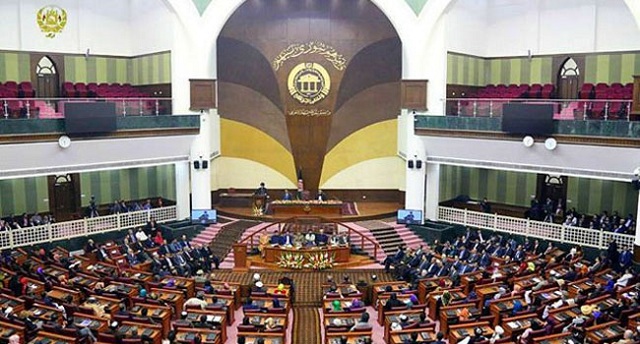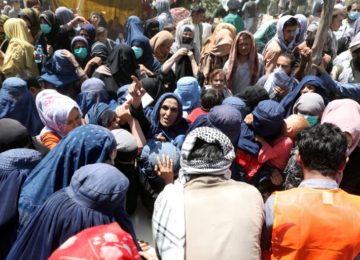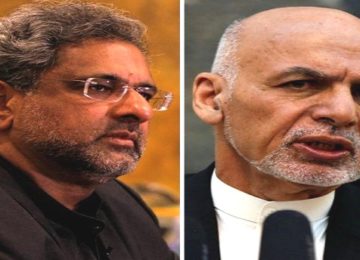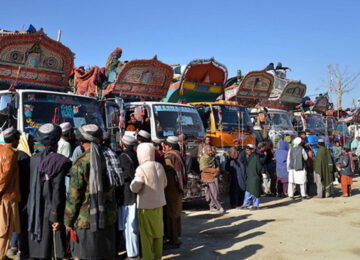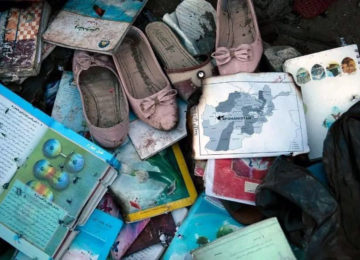Afghanistan’s budget for the next financial year, 1397/2018, is markedly different from previous ones. This is a budget written to ‘international standards’, giving more information, both on 2018 and earlier years, as well as future projections, with detail at the level of ministry, project and province. The Ministry of Finance has tried to be realistic in allocating money according to what ministries actually spend and has abandoned the practice of carrying over unspent funds to the next year. It has also tried to reduce unallocated contingency budgets. These measures, it says, are aimed at “lowering corruption and making the budget a much more effective tool for national development.” The cabinet and the upper house have approved the budget, but, in parliament, MPs are said to be unhappy.
Afghanistan’s budget for 2018 (Afghan fiscal year 1397) (1) was approved by the cabinet on 5 November 2017, submitted to the Meshrano Jirga (upper house) on 6 November and approved by it on 21 November (with comments). It was sent to the Wolesi Jirga on 22 November. It is a budget designed to deal in particular with two hard problems facing the Afghan state.
First, the amount of international money coming into the country has declined and is expected to decline further in coming years – this in a country which is extremely dependent on foreign aid. Second, is the vulnerability to corruption in the budget process, a process which, in the words of Integrity Watch Afghanistan (in a report to be published on 5 December), “has been riddled with incompetence, corruption, and collusion among the Executive and the National Assembly in the last decade.” The constitution gives MPs important blocking powers. Their approval is needed to pass the national budget. They can also put additional pressure on candidate ministers, who have to get MPs’ votes of confidence to be appointed (a procedure which took place yesterday, 4 December 2017), and on ministers, whom MPs can summon to parliament and give votes of no confidence, in a procedure known as estizah. (2) The result has been a pattern of deal-making, with public funds finding their way into the pockets of MPs and government officials. The Ministry of Finance argues that this budget will help deal with both issues and will “reduce corruption and strengthen public financial management.”
Before looking at the budgetary reforms and numbers in detail, it is useful to look in more depth at those two problems and why the Ministry of Finance says it has to face up to them.
Confronting the prospect of declining international funding
Afghanistan, said the World Bank in 2016, “is unique worldwide in its extraordinary dependence on foreign aid.” Quoting the 2013 figure of aid amounting to 45 per cent of Gross Domestic Product (GDP), it said this aid is “critical to financing growth, service delivery, and security.” Despite four-year aid commitments made in 2016 at international meetings in Warsaw (for security assistance) and Brussels (for civilian aid), the overall amount of aid has been gradually declining (more on this later). The reduction is coming on top of a massive reduction in money brought into and spent in Afghanistan by the international military over the years 2011-2014, as they almost completely withdrew their combat troops. This massive reduction in military expenditure imposed an enormous ‘demand shock’ to the economy, causing economic growth to fall from near double-digit levels to low single-digits – no higher or even lower than population growth, meaning that, over the past five years, the Afghan economy has essentially been ‘running in place’ with no gain in average per-capita incomes.
Other ‘headwinds’ have also battered the Afghan economy in recent years, including the political uncertainty associated with the 2014 presidential election and National Unity Government formation; the, until recently, time-bound US military commitment and deteriorating security; shrinking government reach into many rural areas; and multiple security risks to business, including high-profile urban terrorist attacks and kidnappings. Low economic growth inevitably reduced the rate of increase of government revenue, a problem which was compounded during 2014 by a fiscal crisis driven by a haemorrhage of government revenues before, during and after the presidential election. Lower revenue meant that the government could not pay some of its bills. There was a build-up of arrears and requests for short-run ‘emergency assistance’ from donors. (3)
Since then, revenue has recovered and has grown rapidly during 2015-2017, easing the short-term fiscal crunch. It has not, however, significantly reduced Afghanistan’s deep dependency on aid in the face of growing expenditure needs, especially for the security forces.
While total international financial inflows have declined (both aid and military spending), the income stream that has held up reasonably well is flexible, on-budget aid going through the Afghanistan Reconstruction Trust Fund (ARTF) and through new initiatives, notably the United States’ National Development Partnership and European Union’s State Building Contract. This type of aid has been critically important for allowing the government to carry on functioning, including spending on development activities. However, from a narrow budgetary perspective, it may also have reduced the pressure to confront the hard fiscal realities looming over the horizon, allowing the government to delay facing up to the unwelcome prospect of declining aid. Given the many serious political and security problems facing the Afghan state, this may not be surprising. Moreover, the Ministry of Finance has been focussing on and prioritising increasing revenue (on the success of this, see here and here). The push to raise more government revenues may have come at the expense of other budgetary reforms. That has all changed with the 2018 budget. Its focus is squarely on the expenditure side. It is, in part, an attempt to prepare for and adjust to expected declining aid flows.
This is the first budget that provides projections for a year, 2021, that is not covered by existing international aid commitments. Unlike the 2017 budget, the time horizon of this budget goes beyond the four-year period covered by the aid pledges made in the 2016 international meetings on Afghanistan for security assistance (Warsaw) and development aid (Brussels). It does not assume that aid will continue at current levels. “There are no guarantees,” the budget document says, “that international assistance will remain at current levels. It is prudent to assume that aid will reduce and become more variable, based on meeting performance benchmarks.”
The lack of ‘fiscal space’ and the squeeze on the amount of money the government has to spend has made it all the more important that the government funds the most urgent national priorities and does not waste resources on lower-priority and poorly-performing activities. Despite the fiscal squeeze having been a reality for several years, prioritising spending has not been easy to accomplish, for several reasons. First, most of the budget pays for fixed spending (most notably civil servants’ and security forces’ salaries) or pre-committed expenditure (donor-funded projects whose funding cannot be shifted easily – or at all – to other projects). Thus, it is extremely difficult to make substantial changes in the bulk of the budget within the one-year time horizon covered by the budget’s authorised allocations. Second, past practices such as automatic ‘carry-over’ of unspent budget allocations for development projects to the subsequent year further contributed to budgetary rigidity. It meant that even poorly or non-performing activities could carry on getting funds, thereby blocking the movement of resources to higher-priority and quicker-impact purposes. Carrying over funds has been, in effect, a way of rewarding inefficiency, ineptness and corruption.
The prospective decline in foreign aid is only one of the serious risks looming on the horizon which the Ministry of Finance says make reforms of the budget vital. Among the risks it cites are further deterioration in security, political uncertainties around the upcoming election cycle, natural disasters, increasing government staffing and associated rise of the wage bill, ballooning government pension liabilities which will constitute an increasing drag on the budget over the longer-term and other contingent liabilities such as those associated with public-private partnerships and guarantees.
Another factor increasing the pressure to bring in reforms now is that this is the last annual budget that will be fully implemented before the next presidential election in 2019. Waiting to initiate major reforms until 2019, possibly after parliamentary elections (currently scheduled for 2018) and perhaps with a new parliament taking office during the budget preparation process, would have been risky and perhaps even a non-starter. (4)
Corruption and the budget
Concern about corruption in the budget process is the other major motivating factor behind the reforms. The need to obtain parliamentary approval for budgets, backed up by MPs being able to threaten to oust government ministers (through no-confidence vote), creates opportunities for corruption, as do bureaucratic interactions between various parts of the Ministry of Finance and other ministries and agencies. Points of greatest vulnerability to corruption include: a) machinations around pre-budget hearings; b) when allocations and new projects are approved during the budget formulation process; c) when the approval of the budget by Parliament is sought; and d) when allotments are approved and contracts entered into during the budget implementation process. (5) Documenting the alleged deal-making in the Afghan parliament is tricky, although see here and here for two investigations. Last year (1396), the budget was initially rejected by 136 out 140 MPs. At that point, says Integrity Watch Afghanistan in its report to be published on 5 December, the bargaining began: “The Ministry of Finance and Wolesi Jirga against the letter and spirit of the Constitution and relevant laws, agreed to allow each MP to have their projects of choice in the National Budget 1396. As a result, 350 projects worth of USD 70 million was forced into the National Budget. The National Budget 1396 was approved by 139 out of 140 MPs and the Minister of Finance received a certificate of excellence for his work.” (See also AAN reporting here). Such bargaining is likely also to result in a tendency to inflate budget expenditure targets and allocations, building in shortfalls in actual spending in relation to targets. It can lead to misallocation of resources and mismanagement.
One would also want to ‘follow the money’ to see who gets contracts to implement government programmes, how much money gets lost in sub-contracting and how much is then left to actually spend on projects: one government official speaking to AAN estimated that 30-40 per cent of the budget has been getting lost “before the first shovel hits the ground.” Such skimming off of government expenditure often results in shoddy work that may be hazardous (poorly built schools, clinics and roads).
The amount of money that is lost through bargaining between government officials and MPs (in ways that personally benefit both sides) is not known or easy to assess, and it may well be less than corruption in some other spheres of activity in Afghanistan, such as government appointments, bribe-taking and extortion by security forces, regulations (paying for a driving license or a business permit) or services (paying for an education certificate or for health services) and the corruption linked to off-budget aid (not covered in the budget), mining or the opium economy. More important than the outright financial losses, however, is the resulting distortions, inefficiencies, delays and waste associated with corruption in public expenditures, which Afghanistan can ill-afford.
How is the 2018 budget different?
The changes embodied in the 2018 budget can be divided into several categories, though many of the reforms affect more than one of them.
Greater overall transparency
This budget marks a significant advance in presenting a fully consolidated picture of Afghanistan’s public finances, what the budget document calls a “cleaned up” budget, “more realistic and credible.” Total resources for the budget – from various government tax and non-tax revenues, donor grants and other sources – are comprehensively presented. On the expenditure side, the consolidated budget presentation includes the operating budget (government salaries and operations and maintenance, or O&M), the so-called ‘discretionary’ development budget, which consists of projects and programmes paid for by the government through its own resources (ie from government revenues) and the so-called ‘non-discretionary’ development budget – on-budget projects funded by donors with resources earmarked for those particular projects and programmes. (6) It excludes off-budget donor funding, much, though not all of which goes to the security sector but which also funds development projects executed directly by donors and their contractors. In the past, the quite different financing, decision-making processes and implementation mechanisms for these different categories resulted in a tendency to view them in isolation from each other, detracting from the good-practice imperative for the budget to provide a consolidated overall picture of the country’s public finances. Recognising these differences, the new budget nevertheless does provide a consolidated picture, both overall and broken down by categories and agencies. (7)
Thus for the first time, the budget is fully transparent. There are no hidden numbers, so specialists who are able to read budget tables should be able to see exactly how much money the government has and where it is going. This could lead to some interesting revelations as specialists work through the figures. Look out for work on sectors – where money for education is being spent, for example – or comparisons of spending on different provinces.
More conservative, realistic budget projections
In addition to a refreshingly sober assessment of the current situation, future economic and fiscal prospects and risks as mentioned above, the 2018 budget includes significantly more conservative projections than its predecessors:
- Projected real GDP growth in 2018-2020 (1397-99) – at 3.4 per cent per year – is on average more than one percentage point lower than it was in the 2017. (8)
- Government revenue projections are also lower thereby reducing the scope for inflated expenditure in the budget given the essentially balanced budget approach. For the three years following the annual budget year, (2019, 2020 and 2021), this budget projects revenue increasing on average by more than two percentage points less per year than the 2017 budget did for its three outer years. (9)
- On-budget aid projections are much more conservative in the 2018 budget. Grant receipts in 2017 were lower than budgeted for that year, resulting in an estimated shortfall of more than Afs 27 billion (close to 400m USD). This budget projects grants dropping by a further Afs 41 billion (approaching 600m USD) in 2018, another Afs 9 billion (130m USD) in 2019 and a further Afs 15 billion (220m USD) in 2020. As a result, donor grants in the latter year are projected to be around Afs 65 billion (more than 900m USD), ie 29 per cent less than in 2017.
- Most strikingly, the 2018 budget projects what it calls a ‘fiscal cliff’ for the final year of its forward estimates—2021, in which donor grants are projected to be Afs 75 billion (more than billion USD) lower than in 2020, a precipitous decline of 46 per cent in that year alone. Cumulatively, this represents a projected reduction of Afs 140 billion (on the order of two billion USD) or 61 per cent from 2017.
These conservative ‘baseline’ projections exclude the possible positive impacts from further reforms, or, particularly for 2021, possible donor decisions to make the decline in aid after completion of the Brussels and Warsaw commitments more gradual. Nevertheless, as a starting point for budgeting, the government is including only what it thinks it can safely rely on, not what it might hope for.
A final measure worth noting, since it also has ramifications for other areas of the budget reforms, is the shift away from using the previous year’s budget targets for budgeting. Instead, the 2018 budget uses the previous year’s estimated actual expenditures. As the development budget, in particular, chronically falls short of budget targets, this change also has the effect of making the expenditure targets in the current year’s budget more conservative.
Overall, this more conservative approach is intended to strengthen fiscal discipline and also to focus attention on efficiency improvements and reprioritisation of expenditures. The aim is to ease constraints and make the best possible use of the limited fiscal space available for spending.
Better development programming
The 2018 budget introduces multi-year projections for individual projects and programmes, covering the same three-year time horizon beyond the budget year. This good-practice improvement not only provides visibility on the medium-term costs of programmes and projects, but also forces consistency between projections of budgetary aggregates and the individual components of the budget. In other words, the sum of the forward estimates for individual programmes and projects in a sector must add up to the total for the sector. This imposes some discipline which was not there in the past.
The budget strives to largely eliminate the pervasive phenomenon of ‘carry-overs’, whereby funds budgeted for spending on a given project or programme in a certain fiscal year were simply carried over to the next fiscal year if unspent. Greater discipline should come from this change to a ‘use it or lose it’ approach. Carrying over funds also contributed greatly to the chronic shortfalls in development budget execution, since funds and allocations that had little prospect of being fully spent were repeatedly rolled over into the following year’s budget.
The 2018 budget also makes a strong distinction between expenditures on ongoing activities that were already approved on a multi-year basis and new initiatives, with primary focus on the latter and on whether they are in line with national development priorities. Moreover, at the level of ministries and agencies, the 2018 budget establishes a principle that ministries and agencies proposing new spending initiatives should find savings from other activities to offset the additional expenditures. This is intended to encourage micro-level fiscal discipline and curb the tendency to submit large numbers of new project proposals without prioritising between them.
There have been years of over-budgeting and underspending (low execution rates), something which has undermined the credibility of governments and ministries. That, says the budget document, should now change:
Poor practices in program and project planning and rigid project structures that do not allow money to be redirected from under-performing or lower priority activities to better performers or higher priorities are some of the major drivers of this dynamic. This process will be targeted at removing poor performing or low priority programs from the budget over the next few years.
The Ministry of Finance hopes this budget will enable the government to achieve “an execution rate of at least 95 per cent.”
Reducing the scope for corruption
The 2018 budget is striving to reduce the scope for corruption during the budget process, addressing the vulnerabilities pointed out earlier, in various ways.
First, the consolidation and greater transparency of budget allocations and multi-year projections, laid out earlier, will also be helpful from an integrity perspective.
Moreover, the 2018 budget fully recognises the corruption risks associated with unallocated ‘contingency’ budget categories – which amounted to Afs 57 billion (over 800m USD) in the 2017 budget and which to a large extent are actually non-allocations open to bargaining, rent-seeking and corruption during budget implementation. Unspent contingency funds can be and are shifted to other uses during budget implementation, with less transparency and greater risk of corruption. Drastically reducing contingency allocations would not only be good for transparency and budgeting, it would also reduce the space for bribery and other irregularities to occur as contingency funds are allocated for specific purposes during the fiscal year. A small start has been made with the 2018 budget in reducing the magnitude of existing contingencies by about 8 per cent, though more than half of this reduction has been offset by new contingencies mainly for funding of power-plants.
There has been, says the 2018 budget document, “systematic over-budgeting particularly on the discretionary budget.” Such allocations are extremely vulnerable to corruption, for example, money might only be released after payments were made. The elimination of discretionary carry-over of unspent budget allocations into the following year’s budget should also held reduce vulnerability to corruption.
The 2018 budget, in its Budget Execution Rules, sets forth some provisions setting parameters for entering into government contracts and limits on discretion in this regard, in what appears to be an attempt to limit the scope for corruption in the contracting process.
On the other hand, budget allotments (authority to spend) will be provided, based on the approved budget and financial plans of ministries and agencies submitted to the Ministry of Finance, twice a year covering six months each. This appears to be an attempt to make the process of allotting funding during budget implementation, a point of vulnerability to corruption, more automatic and less subject to the discretion of the Ministry of Finance officials approving allotments.
Next steps in reform
As emphasised in the budget document, this budget is just a first step to push forward with reforms, better mechanisms and processes, but does not yet embody their implementation in its budget targets and allocations. The 2018 mid-term budget review – which will happen halfway through the fiscal year – will be much more than a typical mid-year exercise, but rather what is termed as “a full-scale supplementary budget process in mid-1397.” Ministries and agencies will be instructed to prepare new policy proposals in line with national priorities, fully costed and with economic evaluations, for consideration at mid-year. Priorities for the supplementary budget are, according to the budget document: (1) infrastructure, (2) agriculture, (3) urban development and (4) culture and development.
The budget document also indicates that the annual budget process will be revised “from next year” to better align budget outcomes with national priorities. Though details are not provided, it states that:
Over the course of the next few budget cycles, this reformed process will help to align all expenditure financed by domestic revenue and development assistance to national priorities, including by reallocating funds in the national budget.
One priority for the 2019 budget would be to realize the 2018 budget’s expressed intent to slash and rationalize the still-large contingency component of the budget.
Will the budgetary reforms succeed? Opportunities, but also risks – including political backlash
The 2018 budget represents a laudable effort and demonstration of political will. Government sources told AAN it had been tough getting the budget through the cabinet. Getting parliamentary approval is expected to be even tougher. Parliament (which is now more than two years past its normal term in office) could block parts or all of the budget.
A second milestone will be the much heavier-than-normal load that will have to be carried by the mid-term review of the budget, which will involve further acceleration of reforms resulting in a new ‘Supplementary Budget’ – far more substantial than the typical fine-tuning that occurs in the mid-year review. Then the 2019 (1398) budget is expected to fully embed the reforms initiated in this budget, at a time when there will be a new parliament just coming into existence (if parliamentary elections are held on schedule in 2018) or the existing parliament will be finishing up (if parliamentary elections are delayed into 2019) (see AAN reporting on this, here).
There is little time left until the next election cycle for the reforms to be fully implemented and to take hold, let alone get past the point where positive achievements and results start outweighing bureaucratic inertia and political resistance and any associated backlash.
The 2018 budget’s sharp focus on fiscal discipline at both macro and micro levels is welcome, but may carry the risk of pushing the budget into a fiscal policy stance which could tend towards contracting the economy. This would be manifested by an increase in the government’s deposits at the central bank (Da Afghanistan Bank). Such a stance would not be appropriate in the current recessionary environment characterised by anaemic economic growth, with stagnant or declining average per-capita GDP. Instead, as advocated elsewhere, (see here), modest flexibility is called for and ensuring that the fiscal balance (the difference between government revenues and spending, after donor grants) does not become contractionary.
The conservative projections embodied in the 2018 budget, especially in the multi-year projections and in particular for donor grants, are praiseworthy and send a strong signal to Afghan stakeholders that the coming years are likely to see reduced levels of aid and correspondingly a tightening fiscal squeeze. However, there may be a risk that donors will misread the budget projections as signalling that Afghanistan no longer needs the current levels of aid (pledged for 2017-2020 at the Warsaw and Brussels meetings). Particularly in the case of the outermost year (2021), the precipitous reduction in aid shown in the budget projections for that year would be disastrous for the country. Thus, donors should welcome the government’s conservative realism, but not take that as a signal to sharply reduce their assistance let alone make the potential ‘fiscal cliff’ a reality.
The reforms to the budget are also fully consistent with the government’s recently unveiled anti-corruption strategy and its invigorated efforts to bring senior officials to account for corrupt activities. They may, of course, catalyse a political backlash, or weaken elite political support for the government, harming the budget’s prospects and possibly adversely affecting the next election cycle. Fewer resources may spark, not a recognition of the need to spend money wisely, but an intensified effort to grab what is available. So this budget carries political risks. Yet, doing nothing also carries risks. Carrying on with the kind of budgeting that obscured actual spending, helped facilitate corruption and ignored the reality of declining aid amounted to a postponement of hard decisions.
The government is treading a difficult course here. A political backlash (as well as bureaucratic resistance) could hinder the approval, implementation and achievements of the budgetary reforms. The administration and its president may have limited political capital to deal with this – witness the way opposition groups and figures have rallied against his alleged attempts to control election bodies. A more transparent budget with less contingency funding also means less money for the leader to reward friends and pay off enemies, which may not be the wisest course of action for anyone keen to stay in office, as elections approach. Yet at the same time, the government has to show itself as credible, if it wants to receive continuing high levels of international support. That means increasing government revenues to show it is serious about the Afghan state becoming more self-sustaining, cutting waste and corruption and demonstrating it can prioritise expenditures. Political support from the donors may be needed for any hard battles getting this budget through parliament without excessive recourse to bargaining.
Finally and irrespective of the level of any resistance or backlash, to what extent and when will success in implementing the budgetary reforms translate into substantial, visible improvements in budget outcomes – better actual spending on national priorities? Reforming the budget process is a necessary condition for improvements, but far from sufficient. Particularly in the highly constrained fiscal situation Afghanistan faces, creating fiscal space and shifting the structure of expenditures in favour of developmentally more beneficial, higher-priority programmes will take time, and their impact on key development outcomes, whether better healthcare and schooling, more electricity, roads and irrigation water, or others – will take even longer.
Overall, the reforms embodied in the 2018 budget are welcome, if anything overdue, and do set in motion improvements that have the potential to make a real difference in the future. Key are the budget’s recognition of hard realities; fully consolidating the overall fiscal picture; instituting more conservative, multi-year, fiscal planning and better project budgeting; squeezing the scope for rent sharing and corruption; and within the limits of harsh fiscal constraints, striving to increase fiscal space for priority initiatives that will help the economy grow.
However, the overall fiscal structure is so locked in and constrained by fixed, pre-committed expenditures that, particularly in the short run, the best that can be hoped for are marginal, not game-changing improvements. Afghanistan’s fundamental structural problems remain: it is highly aid dependent, has a persistently large fiscal gap (less revenue than spending) and will see a progressive squeeze on public investment over time. If the government does get this budget through, President Ghani or his successor should at least be left with a much surer sense of what money they have and where it is going.
* Bill Byrd is a senior expert at the US Institute of Peace, which funded his work on this dispatch. The views expressed are those of the authors and should not be attributed to the US Institute of Peace, which does not advocate specific policy positions
(1) The constitution (Article 92) gives parliament the right to summon and potentially oust high-ranking government officials who need a vote of confidence to secure their office (ministers or the heads of institutions equivalent to ministries, such as the heads of the Central Bank and the National Directorate of Security). The procedure is known as estizah or ‘interpellation’ (and is sometimes wrongly translated as ‘impeachment’). Read more about it here.
(2) Afghanistan’s fiscal year runs from approximately 21 December to 20 December; in this paper 2018 refers to Afghan FY 1397, 2019 to 1398, 2020 to 1399 and so on.
(3) See Byrd, William A, “Afghanistan’s Looming Fiscal Crisis: What Can Be Done” USIP Peace Brief No 177, 27 August 2014 and “Afghanistan’s Continuing Fiscal Crisis: No End in Sight” USIP Peace Brief No 185, 15 May 2015.
(4) Arguably, the 2018 budget and the associated reforms are already rather late in the current administration’s five-year term, with budget preparation beginning well over halfway through the term and the completion of the 2018 fiscal year covered by this budget occurring when the term will be 90 per cent finished and the country will already be well into the next presidential election season.
(5) See “The Blight of Auction-Based Budgeting: What is It and How can we Deal with It”, especially pp 3-4.
(6) This categorisation, which has been in place in Afghanistan for more than a decade, runs contrary to conventional terminology. Normally, wages and salaries and other committed expenditures that cannot be changed easily in the short run (eg interest payments on government debt) are considered non-discretionary. On-budget development projects, on the other hand typically are considered discretionary (regardless of their funding), since at least when initiated and also during the implementation process (at least insofar as project expenditures can be delayed or accelerated), these are based on government decisions and can be changed.
(7) This consolidated approach is welcome and by providing the overall picture, may inform future decision-making. However, the fragmentation of the national budget, particularly as between the discretionary and the non-discretionary development budget, will remain as an operational challenge, requiring coordination and not least, flexibility on the part of donors that are funding elements of the non-discretionary development budget.
(8) The difference is slightly less if comparing the moving average of three-year forward estimates between the two budgets (ie 2018-20 for the 2017 budget and 2019-2021 for the 2018 budget), since the latter average is 3.7 per cent per year, compared to 4.5 per cent per year in the 2017 budget.
(9) Revenue growth projections in the 2017 budget are 8.1 per cent in 2018, 7.2 per cent in 2019 and 8.0 per cent in 2020, compared to the 2018 budget which projects revenue growth at 4.6 per cent in 2019, 5.9 per cent in 2020 and 5.7 per cent in 2021 (all based on total revenue projections in the national currency – Afghanis).
By Special Arrangement with AAN. Original link.
Disclaimer: Views expressed on this blog are not necessarily endorsed or supported by the Center for Research and Security Studies, Islamabad.



